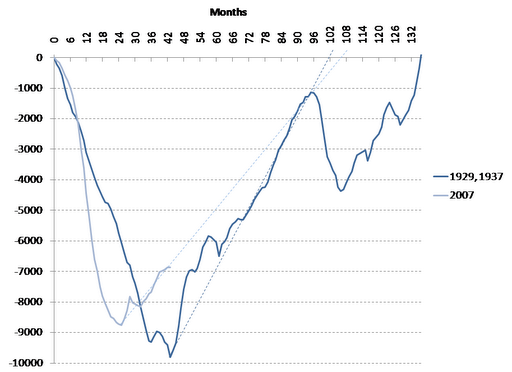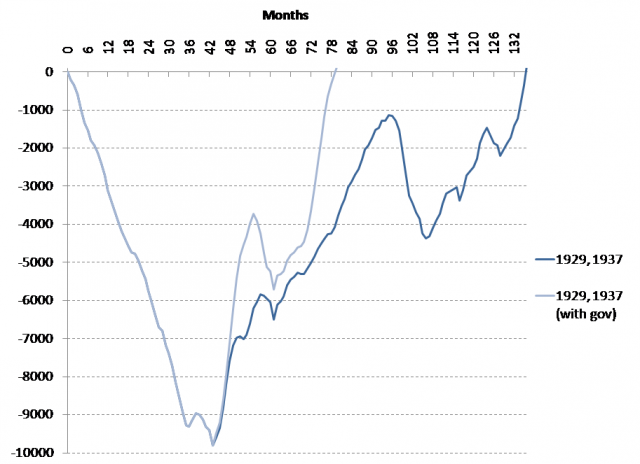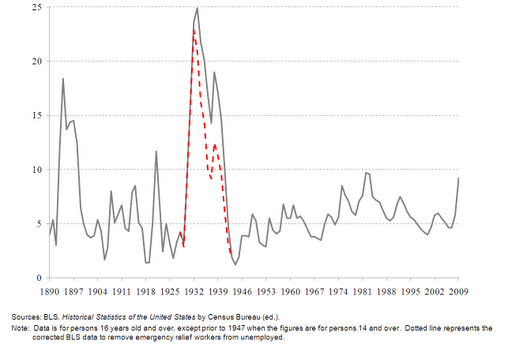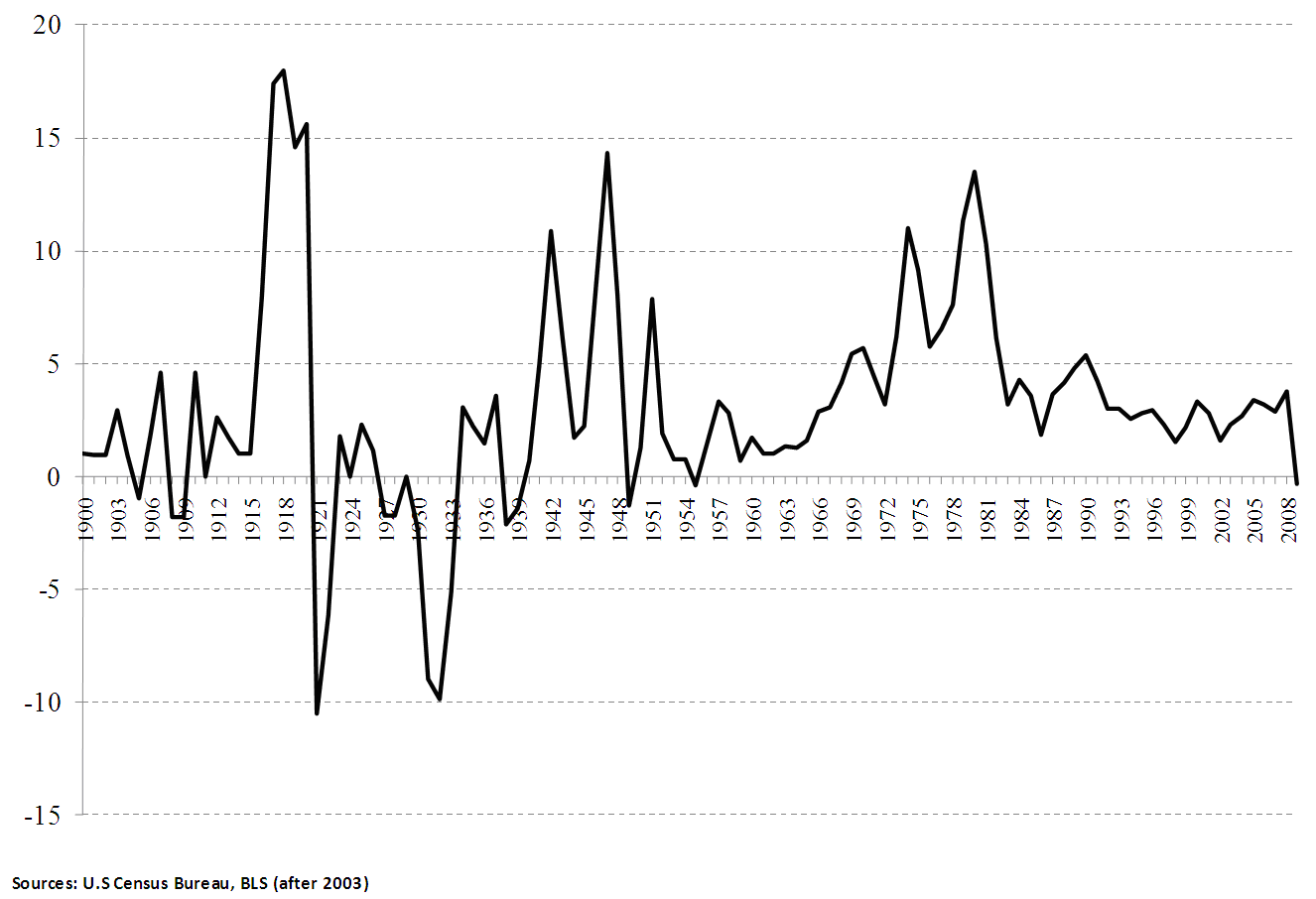By William K. Black
Steven J. Davis, Senator McCain’s chief economics advisor during his presidential campaign, has written a political hit piece on the man that defeated his candidate. His co-authors were Scott R. Baker and Nicholas Bloom. For the sake of brevity I will refer to the authors as “the authors” or “Davis.” They published the piece in Bloomberg. The article purports to be a straight scientific piece, but it is a partisan screed relying on faux statistics created by Davis to support his views. Davis’ statistical methodology is not simply unscientific, it is embarrassingly bad.
Davis’ argument, long discredited by actual surveys of employers, is that unemployment is so high because employers refuse to hire because of Democratic policies. As Paul Krugman has long noted, employers, when surveyed, have consistently and emphatically refuted this claim. Given that the employers answering the surveys are disproportionately Republicans and opponents of regulation who have strong incentives to blame the regulations for their failure to hire, their failure to do so makes the survey results particularly compelling. Davis’ statistical index provides no evidence of why employers are not hiring. Indeed, it is inherently incapable of providing such evidence.
Davis is a partisan Republican. He is a theoclassical economist and a proud representative of the one percent. He has worked for the Hoover Institution, AEI, and Michael Milken’s foundation (the infamous fraud whose crimes destroyed Drexel Burnham Lambert). He is a professor at U. Chicago’s business school.
Davis missed the developing crisis entirely, publishing an article about “the Great Moderation” in 2008 as the financial crisis was ripping across the world. His ideological blinders are so complete that he cannot even consider the obvious – the crisis was brought on by the criminogenic environment produced by the three “de’s” – deregulation, desupervision, and de facto decriminalization plus perverse executive and professional compensation. The economists George Akerlof and Paul Romer wrote an article about accounting control fraud entitled “Looting: the Economic Underworld of Bankruptcy for Profit.” They concluded the article with this passage about the criminogenic environment produced by S&L deregulation in the 1980s.
“Neither the public nor economists foresaw that the [S&L] regulations of the 1980s were bound to produce looting. Nor, unaware of the concept, could they have known how serious it would be. Thus the regulators in the field who understood what was happening from the beginning found lukewarm support, at best, for their cause. Now we know better. If we learn from experience, history need not repeat itself (1993: 60).”
The reason we have tragic levels of unemployment is the financial crisis, which was fully preventable had the anti-regulators put in place by Presidents Clinton and Bush simply understood the concepts of looting and criminogenic environments that we had made clear a quarter-century ago. As I will show, Davis takes the remarkable position that we must not learn from our deregulatory mistakes and close the resulting regulatory black holes.
Absent the restoration of effective financial regulation and prosecutions, and the removal of the perverse compensation systems (which also requires regulation), we will continue to suffer recurrent, intensifying financial crises and the severe unemployment they produce. Effective financial regulation greatly reduces uncertainty by increasing transparency and by preventing Gresham’s dynamics. George Akerlof explained to the profession 41 years ago in his famous article on markets for “lemons.”
“[D]ishonest dealings tend to drive honest dealings out of the market. The cost of dishonesty, therefore, lies not only in the amount by which the purchaser is cheated; the cost also must include the loss incurred from driving legitimate business out of existence.”
Consider the grave “uncertainty” that would exist in a nation without effective police forces. Somalia is a good example. The police do not, and cannot, deal with sophisticated financial crimes. The FBI’s white-collar crime specialists do not patrol a beat and look for crimes. They sometimes act on anonymous tips or leads from other investigations, but overwhelmingly they depend on criminal referrals from the regulators. Our principal function as regulators is to serve as the regulatory cops on the beat to prevent the Gresham’s dynamic by aggressively finding the frauds, putting them out of business, and providing the criminal referrals that make it possible to prosecute the elite frauds. Absent effective regulators, honest firms often face extinction and their employees will lose their jobs.
In Davis’ world, however, regulation is unnecessary and harmful. The former U. Chicago professors, Frank Easterbrook and Daniel Fischel, wrote what remains the U. Chicago bible on accounting control fraud. A generation of American lawyers has been taught this profession of faith from Easterbrook and Fischel’s 1991 treatise: “A rule against fraud is not an essential or even necessarily an important ingredient of securities markets….” The Economic Structure of Corporate Law (1991). Markets are self-correcting, bubbles are impossible, and economic crises are impossible. This was the theoclassical profession of faith in a miraculous trinity. Each of these dogmas has been repeatedly falsified by real life, but facts cannot trump blind faith. Senator McCain’s was a member of the “Keating Five.” Charles Keating, the most infamous S&L fraud, used the Senators to try to intimidate us into not taking any regulatory action against Lincoln Savings’ massive regulatory violation – a violation that led to billions of dollars in losses. Neither McCain nor Davis learned any useful lesson from this scandal.
Davis has mounted politically consistent attacks on the Democrats based on the high unemployment caused by the epidemic of accounting control fraud that hyper-inflated the bubble and drove the U.S. financial crisis. On January 3, 2010 he published an op-ed with Gary Becker and Kevin Murphy in the Wall Street Journal blaming the Democrats for the high unemployment caused by the Great Recession. This was their tag line: “A recession is a terrible time to make major changes in the economic rules of the game.”
Consider the logic of that assertion. The “economic rules of the game” have just led to an epidemic of accounting control fraud, a hyper-inflated bubble, a Great Recession, and severe unemployment and the theoclassical answer to the catastrophe that their faith-based policies have caused is – engrave those rules in bronze. They literally call on us to repeat the mistakes of the past. Theoclassical economists take their cue from the White Queen, who bragged to Alice that with practice she had learned to believe “as many as six impossible things before breakfast.”
The authors acknowledged that the Great Recession had caused severe unemployment, but added the claim that it was the election of Democrats that prevented a prompt recovery.
“Liberal Democrats won a major victory in the 2008 elections, winning the presidency and large majorities in both the House and Senate. They interpreted this as evidence that a large majority of Americans want major reforms in the economy, health-care and many other areas.”
Obama’s economic team (Summers, Geithner, and Bernanke) was strongly neoclassical and economically conservative. The authors then singled out any effort to deal with climate change as particularly undesirable. Apparently it is now a violation of theoclassical principles to require manufacturers to internalize the cost of negative externalities. That is contrary to economics and would lead to a poisoned world in which firms that spent money to restrict harmful emissions would be driven out of business by their competitors who avoided such expenses and obtained a decisive cost advantage. This is another example of a Gresham’s dynamic in which bad ethics drives good ethics from the marketplace. The authors ended by opposing allowing the Bush tax cuts for the wealthy to expire. They presented no evidence in support of their partisan attack on Democrats and their ideological attack on “liberals.”
Davis mentioned “policy uncertainty” as one of the contributors to the employers’ failure to hire workers in this article, but what he stressed was that the Great Recession so depressed private sector demand for goods and services that most employers felt little desire to hire additional workers because they could not sell additional output. He noted that employers had reduced the intensity of their recruiting because they were in a buyer’s market in which they were deluged with applicants and could afford to hire only the most ideal candidates. Even when Davis discussed uncertainty his primary emphasis was on economic uncertainty – the Great Recession. He ended by blaming unemployment on the unemployed. The long-term unemployed were spending fewer hours looking for jobs. Davis called for ending unemployment benefits for the long-term unemployed. The prospect of starving in a fortnight would concentrate their minds wonderfully. (Yes, Davis’ last argument contradicts his earlier arguments, but this is faith-based callousness posing as science.) His “summing up” paragraph has one clause referencing “uncertainty” as a purported tertiary contributor to the slow reduction in unemployment. Again, Davis offered no support for this assertion.
Davis’ latest (October 5, 2011) partisan attack is entitled “Policy Uncertainty Is Choking Recovery.” In five months, Davis’ tertiary, minor asserted contributor to the slow recovery has suddenly morphed into a monster that is the cause of the problem. You might think that the survey results showing that businesses have repeatedly falsified this claim would pose a problem for this meme, but the authors hit on the obvious answer to inconvenient truths – they ignored them. Lest you think that this was due to tight space limits placed on a Bloomberg op ed, check their academic paper, which, also ignores the actual surveys. “Measuring Economic Policy Uncertainty” (October 10, 2011). This begins to explain why their work is embarrassingly bad.
The partisan slanting of the article is also embarrassing, as is the failure to identify Davis’ role as McCain’s principal economics advisor. Here is the authors’ thesis:
“But the persistence of policy uncertainty wasn’t inevitable. Rather, it reflects deliberate policy decisions, harmful rhetorical attacks on business and “millionaires,” failure to tackle entitlement reforms and fiscal imbalances, and political brinkmanship.”
Their thesis boils down to the claim that capitalists are wusses. The reality is that politicians of both parties fall all over themselves saying nice things about business and that the criticisms are addressed to corporate criminals and the wealthy who pay what the vast bulk of Americans view as grossly inadequate taxes. Moreover, according to the neoclassical economics canon these authors purport to believe raising taxes on the wealthy would be a valuable change that would reduce “fiscal imbalances.” The authors, instead, assert that any increase in taxes on the wealthy destroys jobs. By their logic, we should eliminate taxes on the wealthy. By entitlement “reforms” they mean reducing Social Security benefits – that will do wonders for private sector demand and robust jobs growth.
Indeed, the authors’ thesis is eerily reminiscent of Jon Stewart’s famous riff when Dick Cheney shot his elderly hunting companion in the face. Stewart noted that Cheney was so powerful that the victim apologized to Cheney for being shot – by Cheney. The authors want us to apologize to the elite financial frauds that became wealthy through the accounting control fraud epidemic that drove the crisis, the Great Recession, the great bulk of the federal budget deficit, the state and local government financial crisis, and severe unemployment. It wasn’t enough that we bailed them out and gimmicked the accounting rules at their demand to ensure that “their” banks could continue to pay them massive bonuses even though they were in economic reality insolvent. How dare we make “harmful rhetorical attacks” on the frauds! We should all apologize immediately to the productive class.
Speaking of “rhetorical attacks,” consider this partisan assault by the authors:
“The Patient Protection and Affordable Care Act that President Barack Obama signed into law in March 2010 is another example. Rather than simple reforms aimed at efficiency improvements and cost savings, the law seeks to remake the U.S. health-care delivery system, dramatically expanding the role of government and imposing new burdens on businesses and individuals. Even in narrowly economic terms, the measure adds to the uncertainty facing households and businesses.
Moreover, its political durability is in doubt. The Democratic leadership in Congress opted to pursue the most radical plan that could muster the necessary 60 votes in the Senate and a thin majority in the House. As a result, the legislation failed to attract a single Republican vote in either chamber. That political strategy ensured the act would become the focus of future electoral battles and rollback efforts. “
The authors then go on to complain that the lawsuits challenging the constitutionality of the Act (which they do not note were brought by Republicans) add to uncertainty. Whatever, the Act is, it is assuredly not “radical.” It is modeled on a scheme created by a then conservative Republican Governor, Mitt Romney.
In reality, the Obama administration made obsessive efforts to craft a bill with bipartisan support – substantially weakening an already weak bill and taking out, at the demand of Republican and “blue dog” Democrats, the central “cost savings” provision in the bill – the public option. The “simple reform” that would vastly increase efficiency and cost savings – and boost the international competitiveness of U.S. firms – is single payer health care funded by the public rather than (largely) through tax-subsidized but still expensive private health insurance provided by employers. The Republicans and “blue dog” Democrats promised to kill any such bill. The authors’ dread “liberal Democrats” favored a bill that would produce superior health care at a far lower price in line with other developed nations. The private health insurers promised to bury such a bill, so the Obama administration went for the ultra conservative alternative developed by Romney. The authors’ partisan slant causes them to deliberately and comprehensively misstate the facts.
The authors then move to describing their uncertainty “index.”
“We constructed our index by combining three types of information: the frequency of newspaper articles that refer to economic uncertainty and the role of policy, the number of federal tax code provisions set to expire in coming years, and the extent of disagreement among forecasters about future inflation and government spending.”
To which the obvious first question is: why? I begin my analysis with their tax provisions component. They know that a historically unusual number of tax provisions are set to expire in coming years, so they know that when they use that component they will produce at index showing a surge in uncertainty.
“Scheduled expirations of federal tax code provisions were rare before 2000 but have grown rapidly. More than 130 provisions are slated to expire in 2011 and 2012, in many cases setting the stage for new political battles.”
Davis wants to report high uncertainty to fit his priors that he has been asserting without any proof. This is a hopelessly unsound means to produce an index. Any of us could pick a variable that would “prove” our priors. The psychological temptation to prove we are right (especially for theoclassical economists who have gotten everything important horribly wrong) is overwhelming. The bad news is that the tax expirations are the least embarrassing aspect of their index.
An even more ludicrous component is: “the frequency of newspaper articles that refer to economic uncertainty and the role of policy.” First, the authors know, because Davis has been a part of promoting this meme, that Republicans have organized a coordinated campaign to claim that “regulation” and “taxes” are causing the weak recovery from the recession. To now use the publicity that one political party, and at least one of the framers of the index, is generating for partisan purposes as purported objective evidence of the harms of ending the regulatory black holes is so unprincipled as to be beneath contempt. Indeed, the absurdity of this component is demonstrated by the fact that their effort to publicize their index in the form of a partisan op ed and a partisan academic paper has already had the effect of driving their index higher and “proving” their point. Moreover, this is not a new Republican strategy. They followed the same strategy of attacking regulation and regulators for years, but the coordinated attacks on regulation emanating from the right’s “think tanks” (funded by firms that wish to prevent effective regulation) have increased greatly since the passage of Sarbanes-Oxley. Self-generated attacks on regulation become “policy uncertainty,” which becomes a purported empirical basis for preventing effective regulation. The index provides an elegant solution to the Koch brothers’ policy goals.
The authors’ third component is almost humorously bad: “the extent of disagreement among forecasters about future inflation and government spending.” We have a vastly more reliable means to judge the risks of future inflation in the U.S. It is called the U.S. bond market. It prices the risk of inflation continuously. It already incorporates “government spending” because such spending can affect inflation. The U.S. bond markets have consistently been telling us since the crisis became public knowledge that there is no material risk of inflation. Why do the authors believe that “forecasters” are more reliable than bond markets? Why do they believe that businesses are failing to hire because they are concerned that the inflation hawks have remained delusional in their claims that hyper-inflation is just around the corner? What does any of this have to do with regulation? If CEOs were worried about hyper-inflation because they remained in thrall to some inflation hawk analyst who had been proven grotesquely wrong in every forecast over the last five years, wouldn’t those CEOs be happy that the Bush tax cuts were set to expire? Why do CEO’s base their decision to hire on the variance among analysts as to the size of the federal budget instead of the size of the federal budget deficit? The authors do not address these issues in their formal paper or op ed.
The authors then assigned arbitrary weights to their three components. The news stories measure is weighted one-half, while the tax repeals and both forms of variance in forecasts (inflation and government spending) each receive an individual weight of one-sixth.
The authors claim in their op ed (but not in their paper, which claims only “some suggestive evidence on causation”) that their index somehow establishes causality and confers the ability to quantify the jobs that would be created if the Republicans would stop their media campaign of blaming “radical” regulation for the slow recovery. (Of course, the authors don’t phrase it that way, but given the extreme weight they gave to this single component of their index and the fact that the senior author of the paper is a Republican activist pushing this meme in the media, that is how circular and perverse “causality” is in their index.)
“So how much near-term improvement could we gain from a stable, certainty-enhancing policy regime? We estimate that restoring 2006 levels of policy uncertainty would yield an additional 2.5 million jobs over 18 months. Not a full solution to the jobs shortfall, but a big step in the right direction.”
They make no such claim in their paper. “Yield” is a statement of causality. Their study inherently cannot establish causality. Further, as they admit, even they see at best only “some suggestive evidence on causation” – and they are being remarkably over-generous to themselves even in going that far for their study does not present any such “suggestive evidence.”
They also do not explain how we could undo “uncertainty” – as “measured” under their index. As long as the right generates attacks on regulation and claims that it causes uncertainty and those complaints are repeated by their array of web sites the index will “measure” high uncertainty. We went through a remarkable period of radical deregulation, desupervision, and de facto decriminalization that created the criminogenic environments that produced three major crises in 25 years and one party is still demanding that we make the three “de’s” far worse. Are we supposed to repeal Dodd-Frank? Would the repeal increase or decrease “policy uncertainty”? How are we supposed to prevent analysts from being hyper-inflation hawks? Would making the tax laws longer remove uncertainty? Congress could still change them at will. The repeal as of a date certain was meant to reduce uncertainty.
Every aspect of this index is farcical and a naked partisan weapon of attack on the regulations and prosecutions essential to preventing our recurrent, intensifying financial crises. Theoclassical economists were the architects of these crises. They were the great destroyers of jobs and wealth. The claim that we can never undo their criminogenic designs and that any attempt to even criticize the elite frauds will lead to job losses is pure extortion. Their index does not allow any statements about causality, and they know that the claims of causality and quantification that they made in their op ed are indefensible. The direct surveys of employers do allow us to evaluate causality because they are statements (largely) against the political interests of the business people being surveyed. Those surveys refute the argument.
Restoring effective regulatory cops on the beat will increase transparency and reduce the Gresham’s dynamic that is the bane of honest firms. Both effects reduce uncertainty and increase employment. For example, there were far more aggressive regulatory and prosecutorial responses to the S&L debacle than the current crisis. We convicted over 1,000 elites in cases designated by the Justice Department as “major” and we brought thousands of civil and enforcement actions against S&L executives. We largely ended nonprime lending, particularly liar’s loans by S&Ls in 1990-1991. We placed many hundreds of S&Ls and banks in receivership. We consistently wiped out the shareholders and subordinated debt holders in those resolutions. We greatly boosted capital requirements, got rid of junk accounting, and put formal requirements for prompt corrective action in place. We rapidly sold the bad assets in our liquidating receiverships. None of these things has been done in Bush and Obama administrations’ tepid response to the current crisis. The recovery from the recession in the early 1990s was relatively rapid. Our aggressive regulatory actions added greatly to certainty because our actions were consistent, added to transparency, and helped honest firms. That result would be consistent with the authors’ purported theory (gratuitous uncertainty poses an undesirable risk that slows recovery), but not with their ideological blinders that cause them to see regulation as inherently adding to uncertainty.
Bill Black is the author of The Best Way to Rob a Bank is to Own One and an associate professor of economics and law at the University of Missouri-Kansas City. He spent years working on regulatory policy and fraud prevention as Executive Director of the Institute for Fraud Prevention, Litigation Director of the Federal Home Loan Bank Board and Deputy Director of the National Commission on Financial Institution Reform, Recovery and Enforcement, among other positions.
Bill writes a column for Benzinga every Monday. His other academic articles, congressional testimony, and musings about the financial crisis can be found at his Social Science Research Network author page and at the blog New Economic Perspectives.
Follow him on Twitter: @WilliamKBlack

















